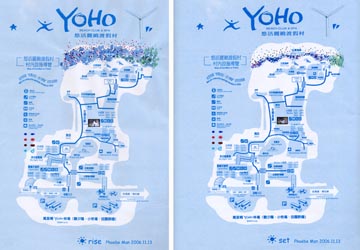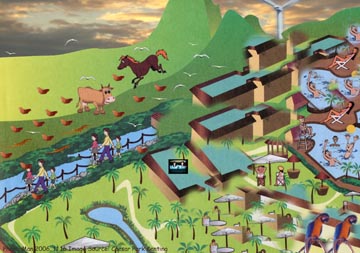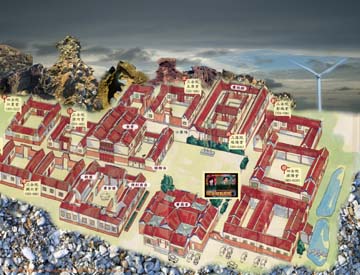



 |
 |
| Psychogeography: Kenting 061113 | Psychogeography: Kenting 061116 |
 |
 |
| Psychogeography: Kenting 061120 | Psychogeography: Kenting 061120 |
| Use Pschogeography Method to know Kenting Phoebe Man According to Guy Debord (1955), Psychogeography is "the study of the precise laws and specific effects of the geographical environment, consciously organized or not, on the emotions and behavior of individuals." Maps are not always objective. They can be subjective, and changed by the thinking and experience of an individual. Just imagine that you need tell your friend the way to your home. You
mark all the attentive places. It can be a noisy red billboard or the
big Mickey Mouse sticker outside a shop. It can also be the tasty smell
of a bakery. The distance between a place and another place is not measured
by a ruler. You just have a vague concept about close or far. This will
be a unique map, full of typical experience and memory. This can be a
piece of art. "Pschogeography" this word first appeared in the 1st issue
of a magazine of Situationist International. The members of Situationist
International used "drifting" to do research on Pschogeography.
They used automatic method and based on their intuition to decide where
to go. They did this to break their own habit and to avoid the instruction/barrier
given by the city planner. They want to study the relationship between
human beings and space. Based on one's intuition is a method and they
formed different rules. For example, they used smell to decide where to
go. Sophie Calle followed strangers. Let the stranger bring her to different
places. In 1999, AAA-Aotearoa followed a balloon and let it lead the ways.
They continued their journey until the balloon disappeared. In the process
of drifting, we might discover our desire and fear, and we can use another
point of view to know a space. Maps always aim at objective, neutral, accurate and rational. If the
space has any change physically, the map needs to be updated. Maps are
also set by the authority. The users usually do not have any say. My Psychogeography:
Kenting is subjective. The maps enlarged my experience of a space.
It is irrational and imaginative. It is changeable and includes time element.
I believe my Psychogeography: Kenting can also function as a map
to show the way (what people normally want to go) and the position of
the architecture (in the heart of an individual). |